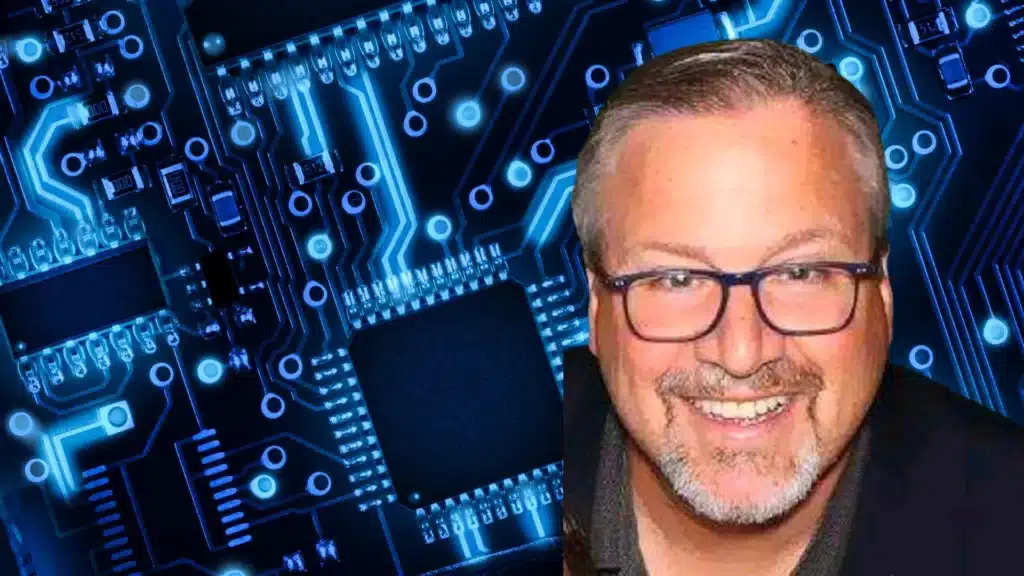How Program Management Helps Deliver Territories on Time
Overview
- What is program management? [1:01]
- Examples from a program management perspective [3:07]
- What are the key components of a project lifecycle? [5:08]
- Why is closing your favorite part? [8:41]
- What does a retrospective look like for territory planning? [9:39]
- Why is a program manager so important for a revenue operations team? [13:20]
- How do you make sure decisions get made on time? [17:35]
- What’s a good starting point for program management [20:41]
- What are two key aspects of program management that everybody should be doing? [26:06]
- Why do you like PMing?/ What is the PM Superpower? + Final Thoughts [29:25]
Introductions
Tyler
Hello, everybody. Welcome to another episode of our Fullcast Fireside Chat. Your host, Tyler Simons. I’m the Head of Customer Success at Fullcast, and we are a go-to-market planning and execution platform. Today’s topic, we’re going to be talking a little bit about program management and how it can actually help deliver territories for next fiscal year’s planning, and maybe actually deliver them on time. I don’t know. Today’s guest is Lisa. Lisa, why don’t you go ahead and give us a little spiel?
Lisa
Thanks, Tyler. First time doing a fireside chat, so I’m really humbled to be a guest on here. Hi, everyone. I’m Lisa Vo. I’m a Program Manager at Okta. At Okta, we’re a platform to secure identity and an easy solution to implement authentication and authorization services for every app.
What is program management? [1:01]
Tyler
Great. So we were talking before we started this thing, and I was kind of half joking about how I knew nothing about program management, which is probably kind of true, but I wanted to just start really at the very beginning, which is can you just tell us in your own words, what is program management?
Lisa
I think it’s really important to understand what differentiates, program management from project management, because I think a lot of people use that interchangeably. They may sound very similar or have some very similar practices and components, but they’re actually very different.
So over in program management, what you’re essentially doing is you’re managing a bunch of projects, and those collection of projects actually make up a program. So you’re making sure that you’re ensuring the people in the team are really focused and collaborating across the functions just to achieve that strategic vision of the program. So a program manager is very focused on the strategy and implementation. How are we prioritizing these projects and making sure that we’re articulating the goals of the program and how that’s all going to impact the business?
On the other hand, with project managers or project management, it’s very tactical. So you’re focusing on more of the operational piece. Making sure projects are actually meeting deadlines, you’re staying within budget, and you’re really making sure you’re completing those deliverables. Not saying that program management doesn’t focus on all that, but we do take a more holistic approach of looking across multiple projects and programs, and we’re not just focusing on that one project.
Tyler
So thinking about an example. We talked about territories on time, and we’re now starting. Everyone, especially everybody that’s got the January fiscal year. Those conversations are starting to happen where they’re talking about next fiscal year’s planning.
Examples from a program management perspective [3:07]
Tyler
So I’m thinking, from a program management perspective, there’s probably a project that pertains to, let’s say, territory planning, but there’s also maybe a project that pertains to cleaning up the data, or maybe assigning quotas. Is that kind of like an example of how a program manager might oversee those multiple projects to make sure that they’re all working, and everybody’s working together to see a common goal?
Lisa
So you want to think of the program manager more like, I like to say, like a lynch pin. So they’re really helping you find connection points between all these projects. And they’re really building a way of working cross-functionally so that the team is actually moving and marching that same direction towards that initiative or towards that project or that program.
Things I like to say, and I’m just thinking through it out loud here, is sometimes program managers can actually take responsibilities of revenue operation managers. So, things you can think about, are like head count. I would always say program managers like to get their hands dirty. That’s the type of program manager I like to work with. So you’re thinking through your head count, I’ve actually done this before being at Auth0, where I had to actually carve territories.
So really going in there and doing some of the execution will be very helpful, especially if you’re tight on resources, which that actually happened to us at Auth0. I think we were a team of three. So I had to kind of take both the program management, my skills, and all that stuff and make sure that everybody’s marching towards that same timeline and that same initiative and also go in and say, “Hey, where can I help you?” And they’re like, “Okay, we need you to help us carve territories because you have some sales operation experience.”
What are the key components of a project lifecycle? [5:08]
Tyler
So what do you think are the key components of a project lifecycle?
Lisa
The way that I want to think about it, let me just define the project lifecycle, and then I’ll outline what I think that we should hit on. So there’s actually four stages to a project life cycle, and this is going to make sure that you’re guiding each of the projects to success, which will in turn and result in helping your program.
So the first stage is the initiation stage. You’re pretty much defining. You’re building out your business case. You’re trying to understand what are the objectives. You’re making your initial scope and kind of understand what your key deliverables are for that project, and you’re identifying the stakeholders that are going to be impacted or be part of that project.
So think of it in a way that you’re kind of making that project charter, and then you have your next step, which is like that planning phase. This is what needs to get done. So go out there and figure out how we plan to do it, and then kind of break down that larger project into bite sized pieces and tasks, and you’re mobilizing your team and you’re preparing that schedule for the completion of these assignments.And then at this time, you’re pretty much doing like a kick off with the team so that they can understand what the project is about.
And then you have your third stage, which technically people always say there’s four to five stages, but I like to combine this stage. So this is like the execution/monitoring stage. This is like, “Let’s go do it.” You’re pretty much as a program manager or project manager, you’re keeping track of the progress. You’re providing the status reports for each of the teams or upper management. You’re kind of briefing your team on like, “Hey, this is what you need to do. This is the definition of ‘done,'” and you’re really providing that guidance of how that works should be completed. And at the same time, you’re trying to manage the timelines and the quality of the project and the performance of the project. Also you’re making sure that what we have planned is actually going originally to plan.
Then you have the last phase, which is the closing. This is my favorite part of the project lifecycle phase, because then you’re pretty much delivering the final deliverable. You’re releasing all your project resources, and you’re trying to understand and determine if your project was successful or not. So what that means is if the project’s goals were met or if you actually initially solved the issue or the problem. Then from there you can do like a retrospect with your team where you’re trying to get everybody together and say, “Okay, so what did we do well? What do we need to do better? What can we do for next time? What still puzzles us?” So really taking that learning, and then you can apply it to the next project or program.
Tyler
Is closing your favorite just because you’re tired of looking at the project? You’re like, “Finally, it’s done. I’m out of here.”
Lisa
There’s those projects where you’re just like, “Actually, I wish that we could continue on.” Those are typically programs, right? Those are more longterm view because it’s more strategic. Then there’s those projects where you’re like, “Alright, I think the whole team is ready to go to happy hour and just get yourself a beer and just celebrate.”
Why is closing your favorite part? [8:41]
Tyler
But in all seriousness, why is closing your favorite part? Is it actually just because you’re like, “This is done and I’m getting that satisfaction,” or is there a piece to this that you really enjoy?
Lisa
No, it’s that. Also, I think one of the biggest things, is being able to celebrate with your team to say, “Hey, we’ve done something. We achieved something really big.” Also my favorite part in the closing is the retrospective. I think it’s the most valuable tool and lesson for the team. Honestly, it doesn’t cost much. You get everybody together for an hour, or an hour and a half, and it really pays off in the long run because you get to apply those lessons learned to the next project. A lot of times, a lot of these projects, especially if you’re doing annually, for example, like territory planning, you’re going to have to know what happened historically and then try to figure out how we can improve for the next cycle.
What does a retrospective look like for territory planning? [9:39]
Tyler
Could we talk about an example of what a retrospective would look like for territory planning?
Lisa
Yeah. When I do retrospective, the way I like to collaborate first with the team is just going through Miro. I don’t know if you ever heard of the tool called Miro. It’s like a very collaborative platform.
Tyler
It’s like Miro, Lucidchart, etc. Like charting type tools or like whiteboarding.
Lisa
Yeah. So that’s the format that I try to use with the team, especially virtually. Because nowadays I think we have a lot of people that are remote. But if you do have a chance, you can also do it in person as well. You can even have a whiteboard with a lot of sticky notes. And make sure to bring Donuts, because that’s going to entice the team even more.
The way that I do the retrospective is through is this. The concept is like roses, thorns and buds. So like roses, I always like to say, “Our team, we’re always at Auth0.” We were really hard on ourselves. We really focused on the thorn side, like “thorn in your side,” like whether the challenges are. But I want to make sure that people have time to actually smell the roses and really understand that “Hey, we achieved something really big. So let’s make sure that we understand what we did really well.” Then budding is kind of like, “Hey, what’s the next potential? What can we do better next time? What are we going to do? What’s an actionable item that we can improve on?” Then make sure that we’re checking in.
For territory planning, I think what we’ve done really well as a team, especially for a team of three, is I think that positivity in having that collaboration aspect and having that support. Also I wanna say using Fullcast was a great tool for us that helped us with our territory carving. It made it really easy and efficient. So what I really like about the Fullcast tool for territory carving was it helped us sync data really easily between our systems. We were able to create hierarchies and nodes and make it easy to territory manage everything and also do the carving within that. I love the visual map that you guys provide. It’s very user friendly.
Tyler
Well, thanks for selling our tool.
Lisa
I am selling it only because I truly believe in the tool and it was a great tool to have.
Tyler
From a program manager perspective. You are guiding that conversation, right? In this retrospective, you’re the person that’s saying, “Hey, let’s talk through the roses, put your sticky notes up, and then you kind of coalesce and group things together. Then at the end of that maybe you disseminate that information further and send that out. Correct? Is that kind of how that goes?
Lisa
We’re like the facilitator, you would say.
Tyler
Yeah, okay, that works. I want to keep this moving because we don’t have too much time and I want to get to the details of just how a program manager can actually help deliver these territories specifically on time. Because that’s the one thing we see the most often is missed timings for territories being ready before the fiscal year start, or whatever that goal is. That time is money. Anyway, we’ll get to that.
Why is a program manager so important for a revenue operations team? [13:20]
Tyler
But why do you think in your world, a program manager is so important for a revenue operations team? You’ve seen both sides of this. You’ve been a revenue operations manager, you’ve planned, you’ve done all the tactical stuff and now you’ve switched into this program manager role. So I’d be curious to hear your perspective on why it’s so important to have somebody in a program management role.
Lisa
I think going back to we’re the lynch pin and making sure that we find that connection point because a lot of times each team depends on another team for some sort of deliverable or some sort of hand off. So we’re making sure that we’re beating people with a stick over their head and saying like “Hey, remember so and so on this team needs this XYZ output.” So we need to make sure that we’re hitting that timeline. And I did not mean to say like really beating people with a stick, but metaphorically, making sure that we’re shining the light on these interdependencies that we have identified.
I think another thing that’s super important to think about is a lot of times I’ve noticed with territory planning, things can slip due to decision making. So in startups it’s a lot easier and a lot faster to make decisions versus like in Corporation there’s like a whole bureaucracy. You got to go through all these approval processes and all these different folks to make sure that they’re all aligned. So a program manager can really help facilitate and rope everybody together, making sure that we have the right folks at the table in order to make those decisions.
Another thing I wanted to say, and this is a key important thing, is making sure people adhere to what we originally planned in the project and the timeline. That’s like one of the key things that program managers can help do is really make sure that people understand what they’re responsible for and also define the rules and responsibility of each person in assigning that particular test. Because if people don’t really know what they’re actually doing or what they’re trying to deliver and who they need to pass it off to, then that’s just going to cause chaos.
There’s a meme that I always think about if you don’t have a program manager or project manager in general to do this. You know that dog that sits on the chair and there’s like fire around him and he goes, “This is fine.” That’s what I think about when we don’t have a program manager, especially when you have a much larger team and everybody starts specializing.
We want to make sure that we’re breaking down those silos so that people are communicating. I think that’s another pain point I’ve noticed around just delivering territories. A lot of times we’re waiting on somebody, but they don’t know that they’re supposed to communicate that over to us, like the decisions or who to communicate to. So we have to make sure that we’re outlining and make sure that they understand. Like, “Hey, once you finish this and all the business requirements that’s required, you need to make sure that you’re handing off and you need to make sure that you’re communicating to that person or you need to make sure you’re communicating up the ladder, down the ladder, etc. So having that communication plan is really important, too.
Tyler
I want to spend some time on this. You said something interesting earlier where you talked about making decisions, and I don’t think that this just pertains to large corporations. I actually think this is also for as startup start to grow and you bring in more people. There’s like this in between phase where you were so small and there’s quick decisions that could be made. You’re talking about a team of three. That’s pretty easy to make those decisions. But if you grow to, let’s say, even five or six or seven people, there becomes more and more of these voices that everybody needs to hear and we need to take in this feedback and then make these decisions which can slow down territory planning. I’ve seen this happen.
How do you make sure decisions get made on time? [17:35]
Tyler
Is there anything that you’ve got, like tips, tricks or anything to help? Like you’ve got this overall timeline of “I know we need to start this at this time, and we need to deliver here, and we’ve got these big decisions that get made.” Is there anything that’s like the silver bullet for making sure that these decisions get made on time so that you can keep the overall project or territory planning thing on time?
Lisa
Yeah, that’s a great question. The top thing that I can think about is making sure that you’re roping in those folks that are making those critical decisions early in the process. I think that’s the only way that you can make sure that you have alignment, because if they can’t understand when these decision points need to be made and if they don’t make the decision, how is that going to impact these other decision or these other deliverables? They need to understand that.
So I think one of the biggest things is just making sure we have those folks involved early and bring them along. That’s the key thing. I always say, bring them along. We don’t want to do where we say “Hey, last minute, you need to make a decision on this,” and that will never go well. So making sure that at the beginning of the kick off they should also be part of that kick off as well. And you can have multiple kick offs for different levels of individuals. So you can have kick off for your project team and then you have another kick off for your leadership team, and those are the folks that need to make those decisions.
Tyler
Correct me if this is the wrong stage to be thinking this in, but everyone’s thinking why do I need to plan to plan? Because we’re territory planning and I don’t need to do this. But there’s a piece of this also that I think if you do the right set of planning before you actually start planning, you’ll identify the decisions that need to be made, the data or the reports or whatever that is, that need to help the person that needs to make this decision or the team that needs to make this decision, make sure that all that stuff is ready for that. So that keeps everything all on track rather than you get a month away from needing to deliver territories and you’re like, “Oh, I need this type of data to be able to make this decision, but it’s not ready. So we got to go clean that data.” And then you’re like, “Oh, there’s all these things that we forgot about.”
What’s a good starting point for program management [20:41]
Tyler
We’ve got companies that got tons of resources, ton of people. There’s plenty of people that watch this that are like, well, it’s me and four other people in RevOps. We’re a small team. I think you and I have both agreed it doesn’t have to be where you got to have this whole program management team and this whole big thing. So I was wondering if you could just walk us through maybe the different stages of maturity as you move into program management or at least kind of like break down with a good starting point to think through as you’re like, I need to go to this. But where can we start?
Lisa
Yeah, absolutely. So the way I think about it, you hit it right on spot. It’s really dependent upon where the company is at that may dictate the different levels of PMing or people like to say PMO, the “Project Management Office” that you need. So the way that we want to think about it is, it’s not a rigid scale, where it’s just black and white. It’s basically like a slow progression scale and there’s a list of guidelines. As you mature, your PMO and your PM process should also progress as well. Like how you’re managing your projects and your programs.
So things that you have to think about are like, “How do we manage our program governance? The type of tools that you’re using to manage all the activities and the dependencies? How much of a communication plan do you need to put into detail? And think about risk assessment or risk management?
So the scale ranges from the initial process all the way to the optimizing process. And in between, you kind of have these stages. So the first stage is the initial process. I like to think about it like this. You’re like, Bambi. You’re learning to walk for the first time. If you’re a builder like me, this is like your favorite stage. You’re doing everything from scratch. So during this stage, there’s a lack of processes, there’s a lack of documentation. There’s really low implementation of the PM tools, and there’s different teams using different ways to manage their deliverables. And that’s going to result in lack of accountability or some cohesion between the teams.
I also want to emphasize, I know a lot of people like metrics, but during this stage, this is where folks are just collecting metrics like ad hoc. That makes it really difficult to evaluate the project’s success and the future of the project or the program.
Then you have your second stage. As you start growing, you move up, right? You have a little bit more structure, process, and standard. So this is very basic project management or program management. This is done more on the individual level of a project. So there’s various project management or program management like methodologies used across the different teams. So an example is like, at Auth0, our team sales operations, we were managing our projects a lot differently from like, marketing operations, even though we both sat under revenue operations. So when we try to collaborate, there might be a little bit of disconnect.
Then you have your third as you keep going up the ladder, you have more of the organizational standards and institutional process. So this is more like well-defined procedures that are the standard way of doing things. This is where you might see like a PMO that pops up. Then management, they’re pretty proactive in being involved in implementing all these new processes and any change management across the organization here. Then on the metrics part, you’re just establishing the baseline. You’re not ready to use it to plan strategically in the future, but you’re just really learning like, “Okay, what’s the standard here?” And then in documentation, everybody starts caring about documentation, which is great, and then things are actually getting recorded.
Then you have your fourth stage, which is more like the manage process. So this is like really clear defined PM processes, and you have really clear documentation in place. During this stage, you’ll see a lot of PMs applying everything from the previous stage and management actually monitoring the metrics. So PMs have to be really good at keeping track of those, and they can use that information or that past performance and really make decisions for any initial key initiatives that they want to do in the future.
Then you have the last phase, which is the optimizing process. So now that you have everything all set up, this is where the optimization kicks in. So you’re trying to adapt your processes in an effort to maintain that productivity and the efficiencies. So then you’re able to make that strategic plan moving forward. What I really want to emphasize about these stages here, is that there might be a time where one org really cares about, let’s say, metrics or documentation, even though they’re at the beginning of that initial phase, but they might be more mature in those components for this stage. So again, it’s like a sliding scale, and these are just guidelines. “You’re on this stage. Okay, you’re here again.” It’s a scale.
Tyler
I don’t want a sliding scale. I need concrete facts that needs to be rigid.
Lisa
I was gonna say you’d do really well at a corporation then, Tyler.
What are two key aspects of program management that everybody should be doing? [26:06]
Tyler
I wanted to still us down. We’re getting closer to our timeline here. But if you had to pick I’m going to say two. That way it’s not just one. It’s going to be two key aspects of program management that everybody really should be doing, regardless of size. No matter. Let’s take these two little things. What would those be?
Lisa
Well, my favorite part, like I mentioned is the retrospective. That’s like the number one thing.
Tyler
I am a big supporter of that, by the way.
Lisa
Okay great. I’m glad we’re aligned.
Tyler
I’m a big supporter of it. I don’t do it, but I’m a big supporter of it. No, I’m kidding. I think that is the biggest thing that everybody always misses because they deliver that project and then they just want to forget about it and there’s no actual , “Well, how did we do? What did we do well?” Again, the retrospective aspect, because that’s how you improve something for the next time you do it. And I think that gets forgotten or pushed off to the side. So that’s huge. All right, let’s move on to the next one.
Lisa
My second one, I think this gets overlooked a lot is creating a communication plan and really over communicate. This is a trend across all companies that I’ve been at, especially with startups. I’ve seen it’s very difficult for folks to communicate up the ladder, then down the ladder, even across teams. I’ve noticed that’s the thing. So I think it’s generally a good strategy for PM to overcommunicate and communicate more than you think you need to, because a lot of people like to make assumptions and you can’t assume.
My philosophy that I always go by is trust, but verify asking those clarifying questions or asking you got to ask those questions, even though you may know, but you want to make sure that everybody else is aligned with you as well. Because not everybody’s going to have the same level of understanding. I’ve noticed that we experience this at Okta during this planning phase right here, and then also at Auth0 the exact same way as well, too. So I would say it’s really huge and important to build that culture and make sure the team is really centered around the communication piece.
Tyler
You talk about the communication plan. By that you mean like, what is the plan at each stage of, let’s say, territory planning since we’re talking about it. At each phase, who are we going to communicate to? How are we going to communicate it and kind of lay that out? It’s not just necessarily, a rule of, “Hey, make sure you communicate this stuff, or we’re going to communicate in this channel,” but really identifying the people that need to be communicated and what type of information, correct?
Lisa
Yeah, absolutely. You hit it on the mark there.
Tyler
All right, I’m ready to start my program management career.
Lisa
I was going to say you aced your test. You’re certified.
Why do you like PMing?/ What is the PM Superpower? + Final Thoughts [29:25]
Tyler
All right, so we’ve got a special question for you. We’re just about out of time, and I want us to wrap up and just talk about, like, why do you like PMing? I guess. What is the PM Superpower?
Lisa
Okay, so I’m a dork, I’m a huge fan of jigsaw puzzles, and I can relate this to PMing. So if you think about PMing, it’s like a jigsaw puzzle. When you first get a program or a project, you have all these pieces that are spread out on the table and you’re trying to understand, “Hey, what do we need to do in order to achieve the outcome?” So in the jigsaw puzzle, you’re starting around your corners, right? Then you build your borders, and so that’s where you understand your key deliverables, and then you start finding these chunks of pieces and details, and you start building these Islands. And I think the most exciting part for me as a PM is when you have this, AHA moment where you can actually connect those large land masses of puzzles.
So that’s like, your dependencies and you’re like, “Oh, wow. So now I know that this person needs this, and I can help with that.” So I think that’s what makes PMing really fun for me. But also, I think its just the challenge. You’re always operating in some uncertainty, and then you’re learning something new every day, and so things may not go according to plan, and then something unexpected happened, and so that always keeps me on my toes. So I’m like, an adrenaline junkie, I would say, on that piece.
For PM Superpower, I would say, I think it’s important to be able to be hands on. Get your hands dirty. Don’t be afraid to get your hands dirty because I think your team will definitely appreciate it. It depends on what type of PM you are. You could be more hands on or hands off, but I think your team will definitely be more empathetic and definitely follow you and see you as a leader if you’re able to help with some of their pieces of moving things forward. You can unblock. Sometimes it might be that they need some help actually doing the deliverable and it’s also another way to best learn new skills.
Tyler
Yeah. It’s what keeps things interesting. Lisa, thank you so much for joining us today. It’s been a real treat.
Lisa
Yeah, it’s been great. Thanks Tyler for having me.
Tyler
Yep. Thank you and thanks to everybody for joining. Have a good one. See ya.
Lisa
Bye.









